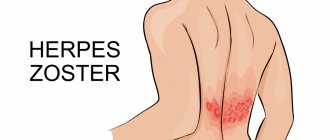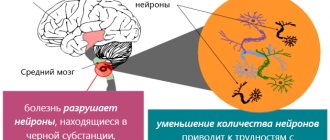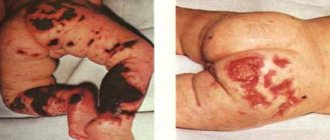Origin and causes
The name “neurosis” originated back in 1776 during a dispute between two doctors studying mental disorders. The Italian G. Morgagni specialized in pathological anatomy. He argued that neurasthenia is a consequence of physiological changes in organs and tissues. In his opinion, the pathology could be provoked by a protracted inflammatory process, tissue degeneration, or genetic characteristics. The Italian specialist’s opponent was the Scot W. Cullen. He considered the only possible cause to be the combined influence of neuropsychic factors. It was Cullen’s opinion that turned out to be correct, and the term he proposed was included in the official list of diagnoses.
In-depth study of the issue over many years has not yielded a comprehensive definition. Psychiatry and biology give different explanations for the deviation in question. Soviet scientist Ivan Petrovich Pavlov wrote that the essence of nervousness is a prolonged overstrain of nervous processes in the brain associated with destructive external stimuli. Sigmund Freud saw the reason in the opposition of the hidden instinct to social prohibitions. American psychologist Karen Horney blamed childhood trauma. Modern experts identify several prerequisites that provoke the disease.
Treatment of obsessional neurosis
We found out what this disorder is and what its danger is. Let's return to the main question: how to treat obsessive-compulsive disorder? There are several options here. It is best to combine them if possible, because this is how you can achieve the best result.
Here is what a psychiatrist has in his “arsenal” for patients with obsessional neurosis:
- antidepressants of various types and generations; - means that normalize mood (normalizers); - psychotherapy.
Now let's look at each of these points in more detail.
Antidepressants
Antidepressants are a group of drugs that affect certain active substances in the brain. By changing the balance of these active substances, and acting differently on the same substance, antidepressants change the speed and orientation of many mental processes, mood and general condition.
In the treatment of obsessional neurosis, antidepressants occupy a central place, because only they can return a person to the possibility of normal communication and full socialization. Proper use of antidepressants guarantees long-term remission without relapse. Sometimes a course of treatment (combined, of course) is enough for a person to get rid of neurosis for life.
In recent years, there have been quite a lot of antidepressants: fundamentally new substances have been synthesized that have fewer side effects, are safer and more effective. Old drugs are gradually leaving the practice of psychiatrists (although they remain in the practice of doctors of other specialties). It is unlikely that a psychiatrist will prescribe you amitriptyline or a similar drug: much more effective substances are now available, the use of which gives lasting, good results without the risk of repeated exacerbations or unsuccessful treatment.
The most popular are antidepressants that affect serotonin receptors. These medications do not cause drug dependence and have relatively few contraindications. One significant disadvantage of this group of drugs: in the first week of treatment, almost all patients complain of severe, debilitating nausea.
Normotimics
Mood stabilizers are drugs used to correct mood: they ensure its stability, stability and constancy. Interestingly, there is not a single drug that belongs specifically to this group and was created only to normalize mood. All such drugs (even the ancient drug made from lithium salts) initially had a different purpose, and the normothimic effect is a kind of pleasant bonus.
If a person suffers from obsessive neurosis, his treatment will necessarily include drugs that normalize mood. Like antidepressants, mood stabilizers affect the main links in the pathogenesis of obsessional neurosis, and their combination is considered the most effective treatment method.
Carbamazepine and its derivatives are most often used. This drug is also used to treat epilepsy (and its various types), but in addition to the anticonvulsant effect, carbamazepine also has a pronounced normothimic effect. By the way, carbamazepine is a substance that was synthesized from a strong antidepressant. To some extent, this explains this effect and high effectiveness in the treatment of obsessive thoughts and, in particular, obsessive movements (compulsions).
Psychotherapy
One of the most important aspects of treating obsessions is psychotherapy. Perhaps you notice fear or obsessive thoughts, or maybe you observe obsessive movements in your child, contact a psychiatrist. In this situation, individual psychotherapy is indicated.
The most common direction is behavioral psychotherapy, based on neurolinguistic programming or “body” orientation. Indeed, in a sense, obsessions are behavioral disorders, so treatment should be aimed at it. Behavioral psychotherapy can be combined with suggestive psychotherapy (it is rarely used as a single treatment method).
Suggestion is what is called “suggestion.” This technique is carried out, as a rule, after preliminary preparation: the person is immersed in a state of medicated or natural sleep, hypnosis, etc. Sometimes suggestion is practiced with a awake person, who must, of course, be calm and relaxed. This state is most easily achieved with sedatives, although experienced psychotherapists can do without them.
What is associated with the development of pathology?
Biological background
- Impaired synthesis of neurotransmitters. The activity of these substances affects the functioning of the nervous system and affects mood. Deficiency of mediators negatively affects well-being and causes depression.
- Intoxication. With prolonged negative effects of toxins, mental problems can be detected. Intoxication can occur due to the consumption of certain substances (medicines, alcohol, drugs), long-term illness, or poisoning.
- Complications of certain pathologies. It may be a consequence of other internal processes and abnormalities: a malignant or benign tumor, vitamin deficiency, damage to the nervous system of various etiologies.
Psychogenic causes
- Prolonged experience. Study stress, difficult work, excessive emotional overload, loss.
- Inability to confront problems. The catalyst for an obsessive state can be an insoluble situation (large debt, loss of position).
- Patient's personality bias. Impressiveness, regular feelings of anxiety, tendency to exaggerate and dramatize.
- Unsatisfied ambitions. Failure of events to meet expectations can be a big shock.
- Upbringing. Lack of normal relationships with parents, aggression, domestic violence.
However, it is often not possible to identify specific preconditions. In recent years, the total number of registered cases of HP has increased 25 times. The most common is obsessive-compulsive disorder. On average, severe pathology affecting the quality of life is found in every third inhabitant of the Earth.
The relationship between neurosis and VSD
Vegetative-vascular dystonia (also known as neurocirculatory dystonia) is not a disease, but a somatoform functional disorder of the autonomic system. It is provoked by a disturbance in the functioning of the central nervous system, which is why VSD is not included in the international classification of diseases (ICD code 10); abroad, this pathology is considered as a generalized anxiety state and belongs to neuroses.
On a note!
The connection between neurosis and VSD is that physical illness negatively affects the psyche. Against the background of poor health, a person begins to develop fears, phobias, hypochondria, and obsessions. Also, and vice versa, a neurotic disorder can affect physiology and provoke autonomic lability. Therefore, these two problems often go hand in hand.
Vegetovascular dystonia occurs against the background of a malfunction of the sympathetic and parasympathetic parts of the central nervous system. Living with neurosis and VSD is difficult due to the many symptoms.
There are disruptions in the signals sent from the brain to all organs through neural networks. This vegetative disorder affects the entire body at once. This is what determines the presence of many symptoms in dystonia at once and their constant change. Today a person may have a headache, tomorrow tachycardia, the day after tomorrow new symptoms will be added.
From the editor: Causes of brain tumors in children, symptoms, types, treatment methods and prevention
Against the background of vegetative-vascular dystonia, neurotic conditions very often begin to develop, divided into 4 main forms:
- Asthenic syndrome (neurasthenia). It is expressed in a loss of strength, a state of exhaustion, weakness, apathy, and insomnia. Asthenia may be accompanied by headaches, dizziness, changes in blood pressure, digestive disorders and other physical symptoms.
- Panic (hysterical). A person begins to suffer from constant anxiety, panic attacks, sudden mood swings, and tantrums out of the blue. In severe cases, convulsive syndromes and hallucinations are possible.
- Obsessive-compulsive syndrome. Accompanied by anxiety, obsessive thoughts, fears, obsessive-compulsive disorders.
- Depressive neurosis. It is expressed in the complete powerlessness of a person in the face of problems that have arisen. The sufferer goes into a state of mental paralysis and inaction. Thoughts about suicide may arise as the only option for getting rid of the onslaught of torment.
You can read more about all types of neurosis here. Living with neurotic disorders and VSD is very difficult due to their extensive symptoms and frequent exacerbations.
It is important to know!
Despite the fact that in some severe forms of neurosis borderline states with hallucinations may occur, this disorder has nothing to do with schizophrenia and is completely reversible (curable).
Signs of deviation in neurosis
Diagnosis involves a comprehensive assessment. Treatment of neurosis is prescribed after identifying the following fundamental signs that distinguish HP:
- The leading role of psychogenic deviation in the deterioration of well-being;
- Reversibility of deviations in the nervous system;
- The picture is not complemented by signs of psychosis (obvious mental disorders, phobias);
- The person does not have dementia, personality changes do not progress;
- The patient is aware of the pathological nature of thoughts and retains critical thinking.
As a rule, with neurosis, two types of symptoms are found: mental and physiological.
Physical symptoms and signs of neurasthenia
- Headache, constant dizziness and autonomic disorders. There is a feeling of squeezing, pulsation, tingling in the temples.
- Discomfort in the chest and heart area. Compression, pain, various rhythm disturbances - tachycardia, bradycardia.
- Pain in the stomach. It may hurt, pull or twist after the experience.
- Deterioration in performance and asthenic syndromes. Weakness, fatigue. Memory and thinking suffer. Chronic feeling of fatigue.
- Nervous pressure changes associated with attacks. It becomes dark in the eyes, I can’t breathe, my head is spinning.
- Loss of coordination. Noticeable external symptoms of neurosis are clumsiness and difficulties in the functioning of the vestibular apparatus.
- Psychalgia. Painful sensations not related to physiology, but caused by anxiety.
- Deterioration in the quality of sexual life. There is a decrease in sexual desire, tension negatively affects potency.
- Speech defects. Stuttering is common.
- Change in appetite. It manifests itself individually as gluttony and refusal of food.
What mental symptoms should be considered if a disorder is suspected:
- Insomnia and difficulty falling asleep;
- Emotional distress without adequate prerequisites;
- Panic attacks, acute reactions and grievances, fear;
- Difficulty making decisions, difficulties communicating, inability to cope with stress;
- Inappropriate reactions to events - aggression or tears;
- Manifestations include incorrect self-esteem - overestimation or underestimation;
- Changes in mood, fatigue, memory loss, irritability are detected;
- ND may include dwelling on an unpleasant situation from the past;
- Inconsistency of life values, dependence of self-perception on temperature changes, loud sounds or bright light.
It is necessary to understand that symptoms do not necessarily include all of the listed events. A comprehensive assessment of manifestations followed by a diagnosis is rational.
Clinical manifestations of neurosis after coronavirus
The leading symptom of a neurotic disorder after Covid is internal anxiety. By and large, anxiety is a normal reaction of the body to the action of any stress factor. It helps to adapt to unusual situations, quickly make certain decisions, simultaneously consider different options for action and choose the optimal one.
With neurosis after Covid, anxiety takes on a pathological, hypertrophied character. Its main difference is its disproportion to the real threat and the situation. A person tends to exaggerate the existing risk. He does not believe that he can influence and change the situation; he focuses only on the worst possible scenarios. He strives by any means to maintain control over what is happening, and failures unsettle him for a long time.
The main symptoms of neurosis after covid are:
- constant excitement, anxiety over any, even minor, issue;
- irritability, impatience;
- internal stiffness and tension;
- fussiness;
- inability to relax;
- feeling of nervousness and an impending nervous breakdown;
- difficulty concentrating;
- memory impairment, absent-mindedness;
- sleep disturbance;
- fatigue, constant fears;
- intrusive thoughts and images.
Somatovegetative manifestations of the disease include:
- sweating;
- a feeling of dry mouth and a lump in the throat;
- periodically appearing feeling of lack of air;
- muscle tension and pain;
- stool disorders, abdominal discomfort;
- dizziness;
- decreased libido, in men - deterioration of potency;
- rapid heartbeat, discomfort in the chest;
- flashes of hot and cold.
In addition, hypochondria is characteristic of neurosis after coronavirus. The patient constantly listens to internal sensations, and in case of any deterioration in health, he tries to get a doctor’s consultation as quickly as possible. And even if, according to the results of the examination, there is no need for medical care, he insists on prescribing any medications, tests, etc.
Often, after suffering from Covid, a panicky fear of re-infection develops, the so-called COVID-phobia, in which the patient regularly visits a therapist, insists on testing, or gets tested on his own.
Treatment methods for neurasthenia
The treatment tactics for neurosis are determined by the doctor depending on the severity of the pathology. In some cases, you can get rid of HP using psychotherapy alone. Properly selected psychologist activities are the fundamental technique for treating neurasthenia. The reversibility of neurosis and a positive reaction to mental influences allows you to quickly achieve healthy thinking. Based on the specifics of the methods, there are:
Pathogenic. Designed to fight the root cause. They help identify conflict, resolve internal contradictions, and mitigate childhood trauma, the consequences of which have become a pathology in adulthood. The most effective methods of therapy are: psychodynamic, systemic, cognitive, integrative.
Symptomatic. They allow you to correct behavior during stressful situations, help lay down the principles of objective perception, and independently stop panic symptoms. They use hypnotherapy, breathing techniques, and relaxing painting.
Sometimes the diagnosis requires medical intervention. Usually, drugs act as a “second fiddle” to achieve rapid physical and mental relief. These products should only be consumed under the supervision of a specialist. The drugs have a wide range of limitations and side effects.
Psychological work on yourself
It is important to find harmony in your life. For this purpose, there are a number of psychological techniques, the use of which is accessible to everyone and does not require special training.
Meditation practice
It is based on complete relaxation, turning off consciousness and freeing oneself from unnecessary thoughts. It is carried out in a comfortable position, you need to slowly inhale and exhale air
After relaxing, it is important to mentally transport yourself to a place that will help you feel happiness and harmony. It is better to maintain this state for 15 minutes to half an hour.
Afterwards, it is important to analyze the sensations and changes in state after meditation.
Autogenic training
The point of autogenic training is to immerse yourself in a state of joy and experience positive emotions. As with meditation, relaxation and breathing are important. A deep breath alternates with a smooth exhalation, mentally expelling negative emotions. Therapy allows you to get rid of complexes, gain self-confidence and normalize your condition.
Types of drugs for relieving neurosis
- Tranquilizers. Means that reduce emotional anxiety and tension.
- Neuroleptics. Suppress psychomotor agitation, reduce the speed of the brain reaction without loss of consciousness.
- Sedatives. They calm down, relieve hysterical neurosis, and normalize the emotional background.
- Antidepressants. Increases the level of neurotransmitters. This is the main way to combat depression using pills.
When conducting therapy among adults and children, light therapy, long walks in the fresh air, and communication with loved ones are recommended. It is good if the patient is engaged in some activity with pleasure, for example, creativity or handicrafts.
Causes of neurosis
Neurosis for most people is a set of obsessive destabilizing thoughts and physiological symptoms (heart pain, tachycardia, panic attack or other manifestations) that do not allow them to live a full life and are periodically repeated. But in reality, all these symptoms reflect the internal psychological state of a person, anxiety and are an expression of his worldview.
In people prone to overexcitement, even ordinary situations can cause chronic stress, causing depletion of an already weak nervous system.
Neurosis is not a physical disease; it is of a psychological nature. The term was coined in 1776 by Dr. William Cullen. In medicine, this concept includes a group of psychogenic disorders with similar symptoms that characterize changes in general well-being and changeable mood.
The main causes of neurosis:
- mental trauma, including childhood trauma, from which it was not possible to recover; great responsibility;
- lack of rest;
- overload at work;
- constant pressure from other people;
- brain overstrain as a result of intellectual stress;
- abuse of alcohol and psychotropic drugs.
Are medications, religion or sports capable of changing this feature in a person’s character and leveling out the endless state of overexertion? In part, yes, but such an effect is unlikely to last long without a properly organized daily routine and psychological techniques.
- mental trauma, including childhood trauma, from which it was not possible to recover; great responsibility;
- lack of rest;
- overload at work;
- constant pressure from other people;
- brain overstrain as a result of intellectual stress;
- abuse of alcohol and psychotropic drugs.
From the editor: Diagnosis and treatment of trigeminal neuralgia
The disorder is the first signal that the functioning of the central nervous system is impaired. Even people with strong nerves are susceptible to it. Are medications, religion or sports capable of changing this feature in a person’s character and leveling out the endless state of overexertion? In part, yes, but such an effect is unlikely to last long without a properly organized daily routine and psychological techniques.
The subconscious mind understands the substitution and tries to reach the person, but he usually does not hear the voice of common sense, since he is very busy with “important” matters, but dissatisfaction accumulates inside him at a subconscious level, which is then expressed in neuroses and worries.
By and large, the cause of neurosis can be anything that can touch a person’s heartstrings - these are troubles in personal relationships with a loved one, misunderstandings at work with a boss and co-workers, a consequence of upbringing, congenital heredity, and even a salesperson’s body kit shopping in a store can cause stress
Therefore, it is important to know how to treat neurosis
The living environment is quite aggressive and more like a jungle, where the strongest individual survives. Nowadays it is more difficult to find a person without neuroses than with those. It is characteristic that there are plenty of ways to combat neuroses, and even for every taste!
The disease can be triggered by various factors, ranging from prolonged stress to bad habits. Most often, people with a genetic predisposition are prone to this disease. For example, if there are cases of mental disorders in the family, then neurosis can easily develop in relatives.
Features of the course in men
Neurosis occurs differently in all people. In women, the hysterical variety is more often found. Characterized by unstable behavior, dramatization of situations, tears and screams. Symptoms when treating neurosis in men who require treatment are somewhat different. They are less likely to encounter a diagnosis, but more often progress the condition to its extreme stages. In representatives of the stronger sex, the diagnosis is often associated with overexertion and workaholism. Common features include:
- Aggression. Reactions to familiar things become acute. A man responds to everyday events with anger.
- Low self-esteem. A person does not believe in himself and is afraid to start a new business.
- Strong self-criticism. They place high and sometimes unattainable demands on themselves.
- Inability to adapt to the situation. Even a small failure unsettles a man with neurosis.
Of particular importance for representatives of the stronger sex is such a manifestation as decreased libido. Sexual life is becoming less and less attractive. In addition, there is a complete or partial absence of erection. This leads to the progression of a nervous disorder and forces one to completely withdraw into oneself. It is important that the male half of society has always been distinguished by hushing up its own problems. Hiding the facts and the lack of measures taken also provokes the development of HP in a man.
Progress and consequences of late treatment
The development of neurosis does not have a specific time frame. Progress depends on the root cause, current circumstances and the strength of character of the person himself. Experts distinguish three stages:
- Initial. A person reacts poorly to stressful situations. Feels irritated and angry for no reason. May complain to a specialist about sleep problems.
- Moderate (hypersthenic). Characteristic signs are associated with increased excitability. Overexcitation is observed, hysterics and attacks of anger are possible.
- Hyposthenic. Accompanied by loss of interest in life. The patient gets tired excessively and quickly, falls into apathy.
At the first manifestations of HP, it is urgent to conduct a full examination. Long-term non-intervention leads to difficulties in the family and at work, inadequate assessment of personality, and the development of concomitant chronic diseases (disorders of the heart rhythm and the muscle itself, gastrointestinal pathologies, vascular disorders). If a person does not treat neurosis for more than 6-24 months, he may encounter a neurotic personality change. In this case, the condition will be irreversible. Outbursts of anger will increase, self-control will decrease to a minimum, and obsessive-compulsive syndrome may appear.
Treatment in hospital
A pronounced positive effect comes from conducting therapy in the clinic. All conditions for a comfortable stay have been created here. Surveillance is carried out around the clock. The inpatient treatment program includes:
- Carrying out diagnostics. Basic techniques will allow you to identify chronic pathologies that can cause neurosis.
- Sessions of general and individual psychotherapy. The result of treatment largely depends on the work of the psychologist.
- Monitoring the intake of pharmacological agents. At home, it is not always possible to comply with the regimen and dosage of medications.
- Related techniques to normalize the condition. Listening to music, drawing, reading literature can have a beneficial effect on the patient.
It is important that the patient will be cut off from pathogenic society: intensive work, conflicts at home and domestic quarrels. This will also have a beneficial effect on the healing process. Affordable prices and guaranteed results make hospital treatment a priority in getting rid of neurosis.
What are we really afraid of?
Fear of the unknown.
At the very least, you have gotten used to the disease over the years, and although there is little joy in such a life, it is understandable and familiar. What will happen after the operation is unclear. How will the recovery process go, will it be difficult and long?
Unknown is a lack of information. Read articles on the clinic’s website about how the operation will take place and how the rehabilitation will proceed. Analyze the progress of recovery: week by week, month by month, think about how it will be in your conditions. If something in articles about rehabilitation after surgery is not clear, ask your doctor.
And best of all - if this is accepted in the clinic - ask the doctor for the contacts of those who have already performed the operation, and contact these people. A patient like you will be able to talk about his feelings simply and clearly.
Fear of complications after surgery.
The Internet is full of stories about surgical failures. Of course it's scary. But is there really anything to be afraid of?
Let's turn to statistics. Data for 2012, Russia. The incidence of complications during endoprosthetics is 2.4% of all operations. Of them:
- Infection - 1% of all operations.
- Hematoma - 0.5%.
- Thrombosis, thromboembolism - 0.5%.
- Fractures - 0.4%.
Note that these are statistics from almost eight years ago; since then, medicine, no matter how trivial, has not stood still - both the prostheses themselves and operating techniques have been improved, so that the likelihood of complications has become lower. And, most importantly, all these complications are not fatal. They are fixable. Yes, correcting them will require time and effort, but everything can be solved. In general, patients are satisfied with the result.
Based on the results of twelve years of observation of patients after endoprosthetics, excellent and good results were noted by 98.5% of patients, satisfactory by 1.4%, unsatisfactory by 0.1% (restrictions in joint mobility remained).
So, the probability of being dissatisfied with the result of the operation is 1 in 1000. Do you still think that you should be afraid of complications?
Fear of death.
The fear of death is inherent in most people and there is nothing shameful about it. Again, stories of someone (usually an acquaintance of an acquaintance, no specific names) not waking up after surgery circulate constantly. Well, let's get back to the statistics again.
You may have already noticed that the complications mentioned earlier did not include death. This is because of the 17,361 operations performed in 2012, not a single one resulted in death.
That is, no one died. Neither during the operation itself, nor after it, from complications.
Should we continue to be afraid? In the end, for each of us the probability of dying in a traffic accident is much higher than dying on the operating table - but we are not afraid to leave the house.
The harm of self-medication
Many people try to get treatment based on advice taken from a dubious website. Following such recommendations and taking measures on your own is extremely dangerous. The following situations may occur in response to improper treatment:
- Progression of neurosis;
- Development of a persistent irreversible disorder;
- The appearance of other chronic diseases;
- Suicidal thoughts;
- Drug poisoning;
- Problems in society;
- Damaged relationships with loved ones and colleagues.
Outpatient program and remission
In the absence of an aggravating factor, therapy can be carried out on an outpatient basis. Treatment includes identical points:
- Attending psychotherapeutic sessions in accordance with the approved schedule;
- Taking medications according to indications as needed;
- Treatment of the underlying provoking disease, if present;
- Searching for some kind of “outlet” in hobbies and creativity;
- Gradual return to society.
Neurosis is highly treatable, under the supervision of the attending physician, and quickly fades into the background. Relapses are observed in rare cases, but as part of psychotherapy, the patient is taught to independently cope with anxious thoughts and panic. If you follow all the recommendations, peace and joy will forever take away nervous tension.
Prevention
Primary and secondary prevention of HP plays an important role. Even after complete recovery, it is important to follow recommendations to prevent relapse. The prevention program involves actions such as:
- Maintaining a healthy lifestyle. A balanced diet, adherence to sleep and rest, and exercise are the main pillars of a healthy nervous system. Narcotic substances are strictly prohibited. You should not drink alcohol regularly or in large quantities. It is advisable to completely give up tobacco products.
- Prevention of traumatic effects. One of the main goals is to minimize stress, avoid conflicts, and maintain a favorable emotional atmosphere.
- Following the principles of proper education. You should not instill in children the idea of their exclusivity and superiority or, conversely, artificially diminish their successes and merits.
- Maintaining adequate lighting. A banal lack of light often leads to the appearance of the first signs of neurosis and depression. It is worth giving up thick curtains and using bright lighting in the evening. Light helps produce serotonin, a neurotransmitter that has a positive effect on mood.
- Timely detection and treatment of pathologies. It is important to be regularly examined and urgently stop disorders of the endocrine, nervous, cardiovascular and other systems. Advanced pathologies significantly increase the risk of nervous disorder.
How to cure neurosis on your own?
Neurosis is a general name for a group of reversible psychogenic (caused by a mental state rather than a physical disorder) disorders. Problems in personal life, financial difficulties, psychological pressure from surrounding people, a guilt complex, high self-hypnosis - these are the main reasons for the development of neuroses.
Despite the psychogenic nature of neurosis, the symptoms of such a disorder include both mental and physical manifestations.
Mental manifestations:
- Increased sensitivity to stress, vulnerability and touchiness;
- Anxiety;
- Tearfulness;
- Sleep disturbances (difficulty falling asleep, in the morning a person does not feel well-rested);
- Decreased memory and ability to concentrate.
Physical manifestations:
- Increased fatigue;
- High sensitivity to bright light and loud sounds;
- Decrease or increase in pressure;
- Digestive problems;
- Sweating;
- Cardiopalmus;
- Decreased potency.
The symptoms are clearly negative in nature and, if neurosis is not dealt with, lead to its worsening. Doctors recommend that if you have neurosis, immediately seek help from a psychotherapist - this is an absolutely correct decision, but it can be supplemented with a set of general health measures. Moreover, in the case of neurosis, these measures may be sufficient to completely eliminate the problem.
Since the cause of neurosis is always psychological in nature - and, one way or another, associated with stress - the main task in self-treatment of neurosis is to reduce the stress load to a minimum. To do this, fairly simple but very effective techniques are used. The first one...
Normal rest
In the frantic pace of modern life, many people simply forget that a person, on average, needs seven to nine hours of sleep for proper rest. It is the lack of sleep, combined with high daily stress, that leads to the appearance of neuroses: a person becomes overtired, does not have time to recover, and becomes even more overtired...
As a result, constant physical stress accumulates and the quality of life sharply decreases. Moreover: without enough sleep, a person loses the ability to concentrate on work, becomes less successful in daily activities - psycho-emotional stress begins to accumulate.
If you want to cure neurosis yourself, you need to normalize your sleep and wakefulness patterns. Allocate at least 7-8 hours of sleep, and go to bed and get up at the same time. This will not only relieve you of neurosis, but will also lead to overall health of the body.
Healthy eating
Although neuroses are of a psychogenic nature, it must be remembered that a person’s mood and general well-being largely depends on objective physiological reasons. Of key importance are:
Folic acid. Promotes the production of serotonin, the “happiness hormone”. Contained in bananas, citrus fruits, cabbage and greens (sorrel, lettuce, spinach, etc.);
Vitamin B. Also necessary for the production of serotonin. In addition, with a lack of B-group vitamins, a person feels constant fatigue and weakness, severe anxiety - such disorders provoke neuroses. Vitamins B are found in fermented milk products, cereals, green vegetables, chicken meat, hazelnuts, eggs;
Vitamin C. Necessary for the absorption of B vitamins, protects the body from overload and helps relieve symptoms of neurosis. Contained in citrus fruits, berries, vegetables.
Try to eat at the same time of day, following a routine. In this case, nutrients are absorbed in the best possible way, and the level of stress is minimal. It is also strongly recommended to give up any stimulants (for example, coffee) - with constant use they cause mild dependence and deplete the nervous system. You should definitely reduce your consumption of alcohol and cigarettes to a minimum, and ideally give them up completely.
Physical exercise
Constant physical stress is another common cause of neurosis. To combat it, regular exercises and training are used:
- Fitness;
- Cycling;
- Swimming;
- Run;
- Dancing;
- Yoga.
Sports and dancing will help you take your mind off everyday problems, tone your body, and feel more energetic. They do not directly affect the causes of neurosis, but improve general condition and help cope with stress.
Breathing exercises
To cure neurosis yourself, you need to pay attention to proper breathing. Breathing exercises help improve blood circulation, ensure blood flow to the brain, and calm the nervous system. By focusing on your breathing, you can take your mind off mental stress and release endorphin into your blood, a hormone that affects a positive mood.
Regular breathing exercises can increase blood oxygen saturation. For a complex effect - normalizing CO2 levels - you can use the Samozdrav breathing simulator; it makes breathing exercises as effective and comfortable as possible.
Therapeutic baths
A hot bath helps you relax, relieve physical and psycho-emotional stress - what you need when self-treating neurosis. To enhance the effect, you can add chamomile, pine needles, lavender or rosemary to the water. A contrast shower also gives a good effect: alternating dousing with cold and hot water.
Calming fees
If you cannot relax and constantly experience psychological stress, try drinking calming infusions before bed and perhaps during the day. It can be:
- 3 parts chamomile, 2 parts valerian root, 5 parts caraway fruit. Brew 1 tablespoon of the mixture per glass of boiling water, leave for 20 minutes;
- 2 parts watch leaves, 1 part hop cones, 1 part valerian root, 2 parts mint leaves. Brew and infuse in the same way as the first collection;
- Equal parts of valerian root, rose hips, motherwort herb, mint leaves and hop cones. 1 tablespoon per glass of boiling water, infuse for an hour.
All these herbal teas have an excellent calming effect and have no side effects.
A key role in the treatment of neurosis is always played by relieving psycho-emotional stress and normalizing sleep and rest patterns. Ensure yourself stable and long sleep, avoid overwork and conflicts, do breathing exercises and physical exercises. In most cases this is enough.
Take care of your nerves, stay calm and subscribe to our blog to read interesting articles about health every week.
We offer our method of getting rid of neuroses using breathing exercises on the Samozdrav simulator. You can find out more about it by following the link.









